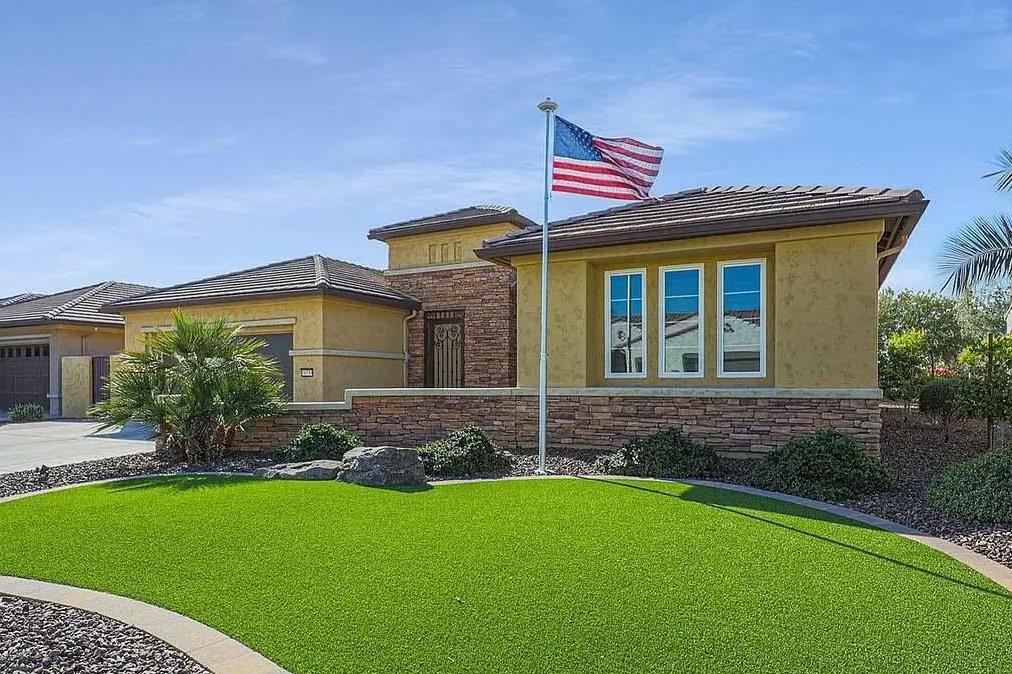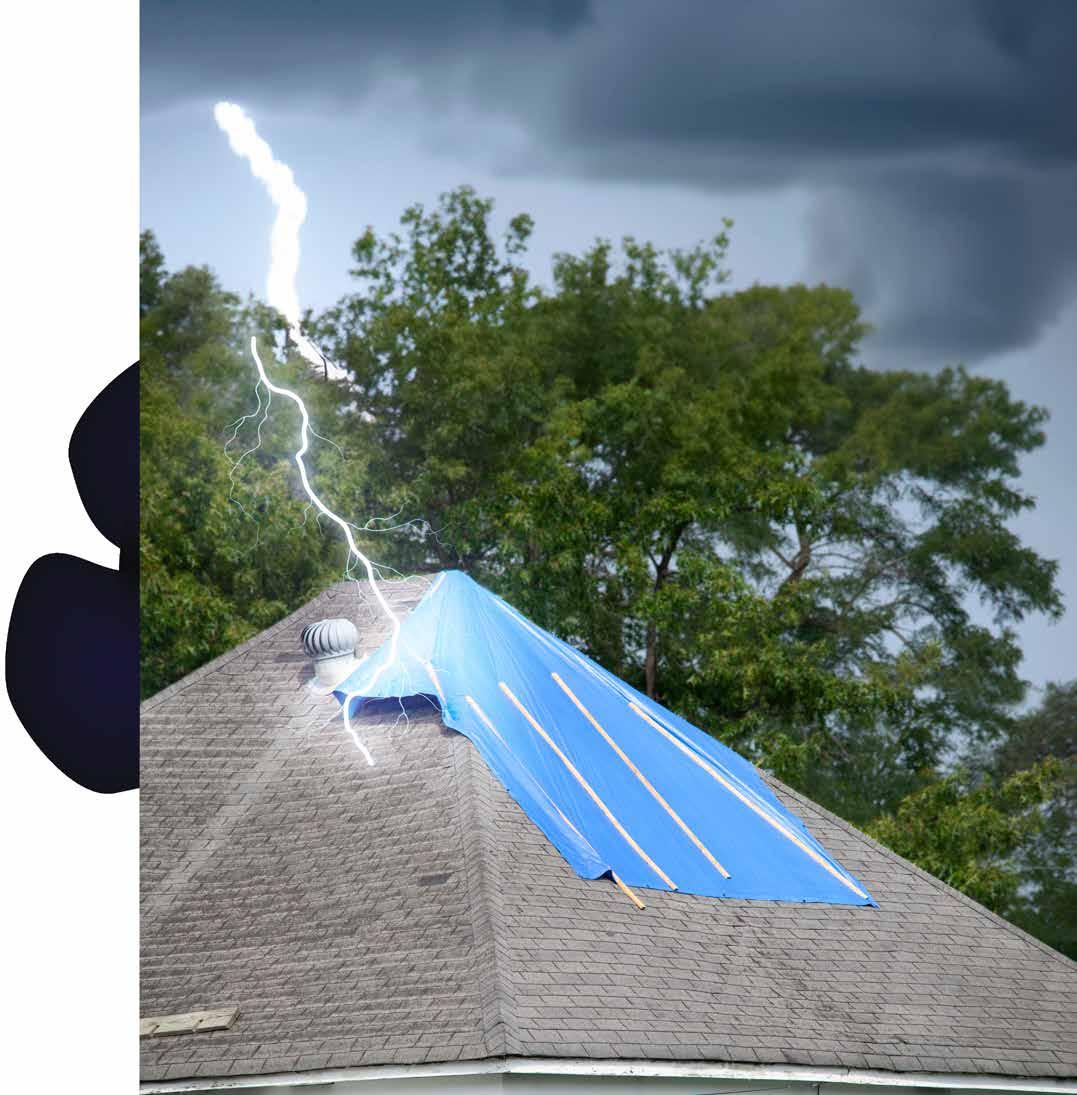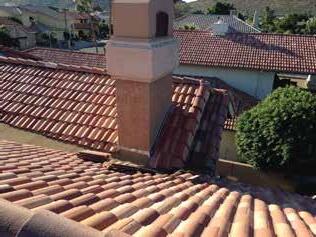

All contents © 2010-present Estrella Publishing LLC. All Rights Reserved. Reproduction in any form, in whole or part, without written permission from Estrella Publishing LLC is prohibited. Estrella Publishing accepts freelance contributions, there is no guarantee that materials will be used or returned. Some content is provided by Brandpointe. Estrella Publishing is not responsible for the content of contributing writers and advertisers and assumes no responsibility for errors appearing within. Opinions expressed are those of the writers and not necessarily those of the Publisher or Advertisers. Estrella Publishing reserves the right to restrict all advertisement to their proper classification and to edit or reject any copy at its sole discretion. Neither this publication nor Estrella Publishing is an agent of or in any way affiliated with the associated Developer nor Homeowners Association, or any of their respective affiliates. This publication has not been approved by, sponsored by, or endorsed by the associated Developer nor Homeowners Association in any way.






2 Estrella Publishing - Viva magazine May 2024
Published by Estrella Publishing LLC, PO Box 6962, Goodyear AZ 85338. Additional copies can be obtained for a fee by contacting info@EstrellaPublishing.com Catherine Uretsky, Publisher and Editor Talia Uretsky, Assistant Editor Al Uretsky, Publisher and Sales Executive 623.398.5541 info@EstrellaPublishing.com








Estrella Publishing - Viva magazine May 2024 3 For Lease In Pebblecreek Building in the community? Want to try Pebblecreek on before you buy? This fully furnished rental is for you! Stunning kitchen with granite counters, center island, gas cooktop and large pantry check all the needs for the chef. Spacious great room with fireplace. Just one step from the views. Extended covered patio and two pergolas give you unlimited options to entertain. Backyard includes water feature and fire pit. Available May 1st, 2024. SHERISPIREK.COM | 480.316.0016 | SHERI@SHERISPIREK.COM Sheri Spirek REALTOR ® Pebblecreek Resident 16739 W HOLLY ST | GOODYEAR, AZ 85395 REALTOR ® SHERI SPIREK 2 BED + DEN | 2.5 BATH | 2,201 SQFT MLS 6677853
From Me To You...
One of our dogs passed away this week. Even though he was getting on in years - he made it to the grand old age of 73ish in dog years - it was unexpected. What was worse is that he was living at college with my son, and I had to help him (my son, not the dog) navigate emergency vets and momentous decisions about his childhood pet from a distance.
I learned several things during the process, the most important is that letting go can be a blessing. Hank was in pain and I was glad that his suffering was brief, and letting go of him was the right thing to do. My son is now a man and is very capable of making important decisions, navigating the world with the information he has at hand. I discovered that letting go of control where he is concerned was the right thing too.
Hank (the dog) had slipped into the role of old man when he lived at home with us, but once he got to Pullman at the tender age of 9, he joined a Fraternity

and began his teenage years all over again. He chased stray dogs off his property, became a great wing man for his roommates, helped raise money for their philanthropy - Special Olympics, joined his frat brothers on the Fraternity composite portrait, and I am sure lapped up a beer or two in his time there. He was a blessing for my son, a reason to stay on the straight and narrow - you can’t party too hard when you have to take the dog out for a walk when you get home - and above all a friend who always had his back when classes, work, and relationships seemed to much to handle.

So I want to say ‘Thank you, Hank’ you were a good dog and we will miss you.
Catherine Uretsky Editor, The Hamlet Magazine
info@estrellapublishing.com 623.398.5541


4 Estrella Publishing - Viva magazine May 2024
Fun in the Sun
As the temperatures rise in our communities and the sun beats down with intensity, it is crucial to understand the importance of sunscreen and the role it plays in protecting our skin. Sunscreen is not just a cosmetic product, but rather a vital tool in preventing skin damage and reducing the risk of skin cancer.
One of the key components of sunscreen is the Sun Protection Factor (SPF), which measures the level of protection it offers against harmful UV rays. The higher the SPF, the greater the protection. Dermatologists recommend using a sunscreen with an SPF of at least 30, which blocks 97% of the sun’s UVB rays. The Higher the SPF factor, the more of the sun’s UVB rays. However there is no sunscreen that can block 100% of the sun’s UVB rays.
Sunscreen not only helps prevent sunburns and premature aging, but it also plays a critical role in reducing the risk of skin cancer. Prolonged exposure to UV rays can damage the DNA in our skin cells, leading to mutations that increase the risk of developing skin cancer. By consistently applying sunscreen, we can protect our skin and lower the risk of skin cancer.
It is important to note that sunscreen should be applied generously and regularly, especially when spending extended periods outdoors in Arizona’s scorching heat. Reapplying sunscreen every two hours, or more frequently if sweating or swimming, is crucial to ensure continuous protection against UV rays.
The importance of sunscreen in Arizona’s hot weather cannot be overstated. By incorporating sunscreen into our daily routine and making it a priority when spending time outdoors, we can safeguard our skin against sun damage and reduce the risk of burns and skin cancer. Remember, protecting your skin today can have long-lasting benefits for your health tomorrow.



Estrella Publishing - Viva magazine May 2024 5





A L L E N T U R N E R L o a n O f f i c e r | N M L S # 2 1 2 7 6 2 Cell: 602-290-9392 eFax: 866-448-6845 ALLEN TURNER@FAIRWAYMC CO M WWW.YOURHOMELOAN.TEAM

Cook With Zona
Pasta Salad
As this is my third recipe in the Estrella Publishing magazine, I thought this would be a great time to introduce myself. My name is Arizona, I’m a former preschool teacher, and a mom of three adult children. My husband and I are officially empty nesters living here in the West Valley. My favorite things include pickleball (I know, real original), dark chocolate, and reality tv. I’m choosing to remain semi-anonymous for the fun of it but you can call me Zona. I’m always on the hunt for new recipes too, so if you have any recipes you’d like to share with me I would love to try them out! Email me at ArizonaCooks71@gmail.com.
Pasta salad is one of my favorite dishes to meal prep for lunches or bring to a big gathering! With the weather warming up it’s time to have a backyard BBQ or maybe a pool party and this dish will be a big hit! And a little advice, you do not need to wait to be invited to a picnic or potluck to get some pasta salad magic in your life!
Prep time: 10 mins | Cook time: 12 mins | Total time: 25 mins

Ingredients (5-6 servings)
1 box of tri-colored rotini pasta
1 red bell pepper
1 English cucumber
Mozzarella cheese block
Pepperoni
Olive Garden Signature Italian dressing (measure with your heart)
Italian seasoning
Salt & pepper Steps


• Cook pasta according to the box.
• While pasta is cooking, we’ll chop up the rest of our ingredients. I like to dice my ingredients into bite-size pieces and we’re aiming for about the same amount of all the chopped ingredients.
• When pasta is done, rinse it with cold water to help it not stick together.
• Add all your chopped veggies, as well as the mozzarella and pepperoni to the pasta.
• Pour in your dressing, mix it all together, and don’t forget to season!
ENJOY!
We love to see our neighbors’ delicious creations, so send us a picture of your colorful pasta salad or tag us on social media @ EstrellaPublishing.
Estrella Publishing - Viva magazine May 2024 7
BE FAST
Stroke Awareness Month
May is National Stroke Awareness Month, when health care professionals stress that stroke is a medical emergency and a leading cause of death and longterm disabilities in this country. Stroke affects the arteries leading to the brain and the arteries within the brain. A stroke occurs when a blood vessel that carries oxygen and nutrients to the brain is either blocked by a clot or bursts.
It is important to know the signs of stroke and seek treatment as rapidly as possible, according to Abrazo West Campus Interventional Neurologist Dr. Sushant Kale. During a stroke, part of the brain cannot get the blood and oxygen it needs, and that part of the brain starts to die. “It’s important to recognize that a stroke is happening, because you can save a life, including your own,” said Dr. Kale. “The point to remember is that ‘time equals brain.’ A delay of even five or 10 minutes can make a big difference in a patient’s outcome. Every minute in delay to treatment leads to 2 million neurons dying.”
Advanced stroke centers are able to treat patients with ischemic strokes, large vessel occlusions, hemorrhagic strokes, or strokes from unusual causes that may require specialized testing or interventional therapies, as well as provide post-acute care.
“Every 40 seconds someone in the United States has a stroke, and one in six people will suffer a stroke in their lifetime. When it comes to spotting stroke symptoms, BEFAST and seek help,” said Kale. “Time lost is brain lost.”
Eighty percent of strokes are preventable through healthy lifestyle changes and controlling conditions that raise the risk for stroke such as heart disease, high cholesterol, high blood pressure, or diabetes. Simple lifestyle changes can make a big impact on your risk for stroke such as choosing healthy meal and snack options, lowering your BMI, exercise regularly, limit your alcohol consumption, stop smoking and get regular checkups with your doctor.

BE FAST to recognize a stroke
B - Balance: Watch for sudden loss of balance
E - Eyes: Check for vision loss
F - Face: Look for an uneven smile
A - Arm: Check if one arm is weak
S - Speech: Listen for slurred speech
T - Time: Call 9-1-1 right away


8 Estrella Publishing - Viva magazine May 2024
Home Sweet Home
Getting Creative in Today’s Housing Market
Ready to take a big leap in today’s housing market? You just might be eligible for some fantastic programs putting more money in your pocket along the way.
First thing’s first. Paint color, appliances, and decor style can be changed. But location and HOA fees are forever.
Ready to make that move? Here are two great programs taking the hassle out of securing a home loan.
BUY BEFORE YOU SELL
Downsizing? Upgrading? Looking for peace of mind leaving a vacant home? You can buy a house before you’ve sold the one you already own!

Blue Line Painting
“According to property analytics company CoreLogic, the average U.S. homeowner has racked up a cool $274,000 in equity, up from $182,000 since before the pandemic,” reports HomeLight.

Act fast on your dream home by unlocking a portion of the equity you’ve built over the years with an innovative program called HomeLight. It provides you the confidence to make a strong offer on your new home while attracting the strongest offer on your vacant home.
FIRST TIME HOMEBUYERS
We’re super stoked about the innovative “Home in 5 Platinum” Program! If you’re a first-time home buyer in Maricopa County, you can lock in a 5.9% interest rate under qualifying terms. Here are a few:
Minimum FICO credit score of 640 Annual income up to $138,600
New or existing houses, condominiums, or townhouses
Complete Homebuyer education
K-12 teachers, first responders, U.S. military personnel, veterans, and income qualified individuals who earn up to $49,500 annually get ANOTHER 1% in assistance.


HOW TO GET STARTED
Where does your bargaining power begin? Find a Realtor® with experience and ask for a market analysis to start your house hunting journey.
Submitted by Martin C. Sears PC
Estrella Publishing - Viva magazine May 2024 9
Cabinet Reeinishing Exteriors Interiors
The Bug Guy
As the sun beat down on the scorching desert of the West Valley, the residents were dealing with a different kind of heat - a pest infestation. It seemed that no matter what they did, the bugs just kept coming back for more.
One resident, Sarah, was at her wits’ end with the constant stream of creepy crawlies invading her home. She had tried everything from sprays to traps, but nothing seemed to work. In desperation, she called in the pest control experts. When the team arrived, they were prepared for battle. Armed with their trusty bug spray, they set out to conquer the critters once and for all. However, what they encountered was unlike anything they had seen before. The bugs in the West Valley were not just any ordinary pests - they were armed and dangerous.
The cockroaches were equipped with tiny swords, the ants had miniature shields, and the spiders had built intricate web fortresses. Undeterred, the pest control
team sprang into action. With a combination of quick thinking and sheer bravery, they managed to defeat the bugs and restore peace to the valley. As Sarah watched in amazement, she couldn’t help but laugh at the absurdity of the situation.
With the bugs vanquished and Sarah’s home once again bug-free, the pest control team bid farewell and rode off into the sunset. As they disappeared into the distance, Sarah couldn’t help but feel grateful for their heroic efforts. From that day on, the residents of the West Valley knew that they could count on their trusty pest control experts to protect them from any future bug invasions. And as for Sarah, she had learned an important lesson - never underestimate the power of a determined pest control team in the face of an army of armed bugs.
Submitted by Larry Cash, of Estrella Mountain Pest Control




10 Estrella Publishing - Viva magazine May 2024
Tips
• Watch kids when they are in or around water, without being distracted. Keep young children within arm’s reach of an adult. Make sure older children swim with a partner every time.
• Teach children how to swim. Every child is different, so enroll children in swim lessons when they are ready. Consider their age, development and how often they are around water.
• Make sure kids know how to swim and learn these five water survival skills:
1. Step or jump into water over their head and return to the surface.
2. Float or tread water for one minute.
3. Turn around in a full circle and find an exit.
4. Swim 25 yards to exit the water.
5. Exit the water. If in a pool, be able to exit without using the ladder.
• Install fences around home pools. A pool fence should surround all sides of the pool and be at least four feet tall with self-closing and self-latching gates.
• Empty kids’ pools after each use. Store them upside down so they do not collect water.
• Know what to do in an emergency. Learning CPR and basic water rescue skills may help you save a child’s life.
• SOURCE: SAFEKIDS.ORG
Estrella Publishing - Viva magazine May 2024 11
Money Matters
Slow and Steady
You’ve probably heard stories about fortunate investors who “get in the ground floor” of a new, hot company and quickly make a fortune. But while these things may happen, they are exceedingly rare and often depend on hard-to-duplicate circumstances — and they really don’t represent a viable way of investing for one’s goals. A far more tried-and-true approach is the “slow-and-steady” method.
To follow this strategy, consider these suggestions:
• Start small — and add more when you can. When you’re first starting out in the working world, you may not have a lot of extra money with which to invest, but one of the key advantages of the slow-and-steady method is that it does not require large investment sums to get going. If you can afford to put away even $50 or $100 a month into individual stocks or mutual funds, month after month, you may be surprised and pleased at how your account can grow. And when your salary goes up,

you can put away more money each month.
• Take advantage of an employer’s retirement plan. If your employer offers a 401(k) or similar tax-advantaged retirement plan, try to take full advantage of it. Again, if you’re just beginning your career, you may not be able to put away much in this type of plan, but even a small amount is better than nothing. And as soon as you can possibly afford it, try to put in enough to earn your employer’s matching contribution, if one is offered. These types of plans can offer some key benefits — and perhaps the biggest one is that investing is automatic, in that the money is moved directly from your paycheck into the investments you’ve chosen within your 401(k) or other plan.
• Be prepared for downturns. The financial markets will always experience ups and downs. So, you need to be prepared for those times when your investment statements may show negative results. By understanding that these downturns are a normal part of the investment environment, you can avoid overreactions, such as selling quality investments with good fundamentals just because their price has temporarily dropped.
• Chart your progress regularly. A key element of a slowand-steady investment approach is knowing how well it’s working. But it’s important to measure your progress in a way that makes sense for you. So, for example, instead of measuring your portfolio’s performance against that of an external stock market index, such as the S&P 500, you may want to assess where you are today versus one year ago, or whether the overall progress you’re making is sufficient to help you meet the financial goals you’ve set for yourself well into the future.
“Slow and steady” may not sound like an exciting approach to investing. But it’s often the case that a little less excitement, and a lot more diligence, can prove to be quite effective.
Submitted by Brian Polk, Financial Advisor, of Edward Jones, Verrado resident
12 Estrella Publishing - Viva magazine May 2024
Spring Football
The Highs and Lows of the Offseason
It is a crisp sunny day around most of the country and college campuses are buzzing with excitement. No, not because of the end of the semester, or how much they love their professors – it is spring football time. As a Junior currently enrolled in University, I have been through this ritual before, but the energy and anticipation will never get old.
Whether a good or bad season, the players are working tirelessly in the weight room and on the practice field, determined to be better than the day before. The coaching staff is always busy, trying to create the best plan for success leading into the next season. Expectations will always be high, with the goal of an accomplished season.
Of course, this process is not all sunshine and rainbows physically and mentally (farther north, you quite literally never have sunshine). Practices in about any weather, and the early mornings and late nights can leave the players drained, and minor injuries will start to compile. The competition for the starting job is fierce, and some guys who were once key parts of the team may have to prove themselves over again. The staff will be analyzing every rep, evaluating which players have the talent to help the team.
As an avid fan, I make it a point to attend as many open practices as possible. Seeing the team in action, even in a non-game setting, can be exhilarating. The sound of pads cracking together, the passion of the coaches, and the roar of the crowd (okay, it is mostly just a few people) fills me with a sense of school pride. I love watching the young players stepping up, the vets providing leadership, and the coaching staff fine tuning the game plan.
But spring football is about more than just on-field work. It is also critical timing for a team to bond and build chemistry, especially for the transfers and first-

year students. These players go through grueling workouts, eat together, and even share dormitories. For a lot of them, it is not about being teammates as much as being brothers. That specific camaraderie is vital to the success of the team.
As spring approaches, the anticipation on campus is palpable. This annual scrimmage is the culmination of months of challenging work, and the players are eager to show the fans what they are capable of. The stadium will be filled, music will be loud, and hot dogs will be expensive. It is the corner before the fall, and a preview of an exciting season for whatever team you are rooting for.


Estrella Publishing - Viva magazine May 2024 13










14 Estrella Publishing - Viva magazine May 2024 S e r v i c i n g t h e W e s t V a l l e y f o r 2 0 y e a r s !
Hot Car Deaths
Arizona Chapter National Safety Council (ACNSC) is joining forces with the National Safety Council (NSC) to mark National Heatstroke Prevention Day on May 1, increasing efforts to heighten awareness and educate the community on preventing hot car child deaths.
Since 1998, more than 960 children have died from vehicular heatstroke – 39 in Arizona – with 53% of those incidents involving a parent or caregiver forgetting the child was in the vehicle. And hot cars can hit deadly temperatures quickly. On a 70-degree day, a car’s interior can hit 89 degrees in five minutes and 113 degrees within an hour. On a 90-degree day, the inside of a car can reach 100 degrees in five minutes and 133 degrees in an hour.
ACNSC is urging the community to act immediately to end these preventable deaths. By raising awareness of the danger of vehicular heatstroke and children and emphasizing the three primary circumstances that have led to children dying – a caregiver forgets a child in a vehicle, a child gains access to a vehicle, someone knowingly leaves a child in a vehicle – parents, caregivers and everyone, including bystanders, can play a pivotal role in preventing hot car deaths.
“The possibility of a hot car tragedy is often overlooked. No one thinks it can happen to them or their family,” says Rick Murray, President and CEO of ACNSC. “That’s why it’s crucial that we all become more aware of this danger to prevent such unthinkable and devastating losses.”
Free resources including tips for parents and caregivers, posters, videos, articles, technology solutions and a legislative report are available at www.nsc.org/hotcars. Visitors to the site are strongly encouraged to take NSC’s online course titled “Children in Hot Cars,” designed to raise awareness of the vehicular heatstroke hazard and outline proactive measures to prevent child deaths in hot cars.
About the Arizona Chapter National Safety Council Established in 1949, the Arizona Chapter National Safety Council (ACNSC) is a nonprofit organization dedicated to educating and motivating individuals to lead safer and healthier lives at home, work, school, play, and on the roadways.
Submitted by The Arizona Chapter National Safety Council (ACNSC)



Estrella Publishing - Viva magazine May 2024 15


Find 10 differences in the two pictures

16 Estrella Publishing - Viva magazine May 2024
Time Solutions are on our website www.EstrellaPublishing.com
Puzzle



Estrella Publishing - Viva magazine May 2024 17 EMERGENCY SERVICES Emergencies (Police / Fire) 911 Police Non-Emergency 623.932.1220 Fire Department Non-Emergency 623.932.2300 Fire Dept. (Snake Removal) 602.253.1190 Poison Control Center 800.222.1222 HOSPITALS - MEDICAL Banner Estrella Medical Center 623.327.4000 Cancer Center of America 800.268.0786 Abrazo West Campus 623.882.1500 CITY OF GOODYEAR City Hall 623.932.3910 Code Compliance 623.882.7815 Finance Department 623.932.3015 Graffiti Removal 623.882.7815 Public Relations 623.882.7820 Public Works 623.932.3010 POST OFFICES Avondale Post Office 623.925.2664 Goodyear Post Office 623.882.9148 Litchfield Park Post Office 623.935.2087 LICENSES Drivers & Plates 602.255.0072 Vehicle Emissions Station 887.692.9227 PUBLIC UTILITIES APS - Electric Company 602.371.7171 Cox Communications 623.594.1072 Century Link Telephone 480.428.1290 Southwest Gas Company 877.860.6020 Trash Pick-up 623.932.3010 Water/Sewer 623.932.3010 COMMUNITY SERVICES Eagle’s Nest Clubhouse 623.935.6780 Eagles Nest Fitness Center 623.935.6783 Eagles Nest Golf Club 623.935.6750 Expressions Gallery 623.935.6744 Kare Bears House 623.536.1200 PebbleCreek Main Gate 623.935.0387 Patrol 623.935.0387 Toscana’s Restaurant & Lounge 623.935.6753 Tuscany Falls Clubhouse 623.935.6720 Tuscany Falls Fitness Center 623.935.6740 Tuscany Falls Golf Club 623.935.6757
Useful Numbers
Business Directory
ADVERTISING
Viva Magazine
AUTO SERVICES
AZ Garage Floors
Daniel’s Total Car Care
Earnhardt Auto Glass
Trinity Auto Glass
FINANCIAL & LEGAL SERVICES
Facepoint Insurance - V Eguizabal
Fairway Mortgage - D Santalucia
Ganyo Insurance Agency
HEALTH & BEAUTY
Good Night Pediatrics
Healthy Life Family Medicine
HOUSEHOLD SERVICES
Al’s Plumbing
Arizona Success Landscaping
Blue Line Painting
Century Glass & Mirror
Cris’s Cleaning Services
Consider It Finished Painting
623.398.5541
602.254.3363
623.873.0949
623.463.4371
623.536.2519
602.836.4770
602.524.2421
623.439.2525
623.643.9233
623.889.3477
FASA Tile

General Exterminating Pest Control
Merry Maids of Phoenix
Younger Bros Pest Control
PET
623.329.5170
623.824.4117
623.533.9455
623.444.6204
602.574.3916
623.221.2004







18 Estrella Publishing - Viva magazine May 2024
J&H Appliance Repair JBS Roofing
Hospital
ESTATE Coldwell Banker Realty - A Hurwitz HomeSmart Realty - Sheri Spirek Phoenix Pro Realty - Leslie Henson Realty One Group - Burkhardt Team Realty One Group - Mary Couzens Team Realty One Group - Donna Strand West USA Realty - Judy Coventry 602.568.8752 623.977.2100 623.925.5427 623.247.9252 623.931.9477 623.487.3147 623.298.4200 310.702.1055 480.316.0016 623.377.1329 623.853.5878 480.797.1111 623.271.0518 480.212.2219 “Experience a Higher Standard of Service” PEBBLECREEK RESIDENT REALTORS® SUE BURKHARDT 623.853.5878 | BurkhardtTeam@gmail.com JESSICA BURKHARDT 623.695.7776 | jbb.azrealty@gmail.com Dominick Santalucia Branch Manager - Team Leader NMLS ID 204938 (602) 524-2421 (623) 321-5816 dominicks@fairwaymc.com www.SantaluciaTeam.com Download the FAIRWAYNOW app to apply now FIMC NMLS #2289 AZ License #BK-0904162 20359 N. 59th Ave., Suite 100 | Glendale, AZ 85308 VIEW ALL PEBBLECREEK LISTINGS AT www.BURKHARDTTEAM.com TODAY!
CARE Gentle Hearts Animal
REAL














Estrella Publishing - Viva magazine May 2024 MayhemProof Your roof! Mayhem outside? Peace inside! Shield your home from unpredictable weather with our resilient roofs. New Construction, Repairs, Recovers, Maintenance Installation of Gutters Shingles, Tile, Built Up Single Ply, Foam & Coatings, Metal, Shake Financing available 9.9% APR *Subject to credit approval. Exclusions apply. Ask for details! financing for 15 months if paid in full 0% * * ROC #’s: 061127 - 287012 - 198009 - 082024 - 318282 www.JBSroofingAZ.com


















































































